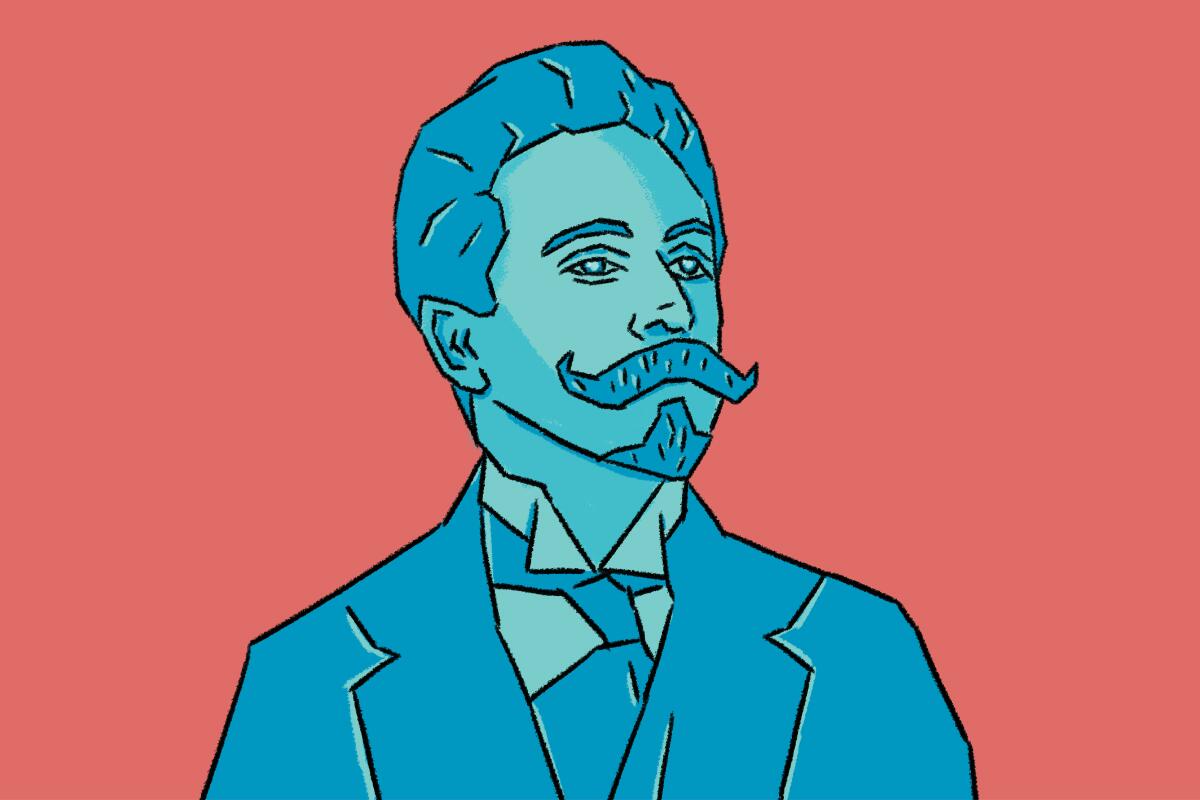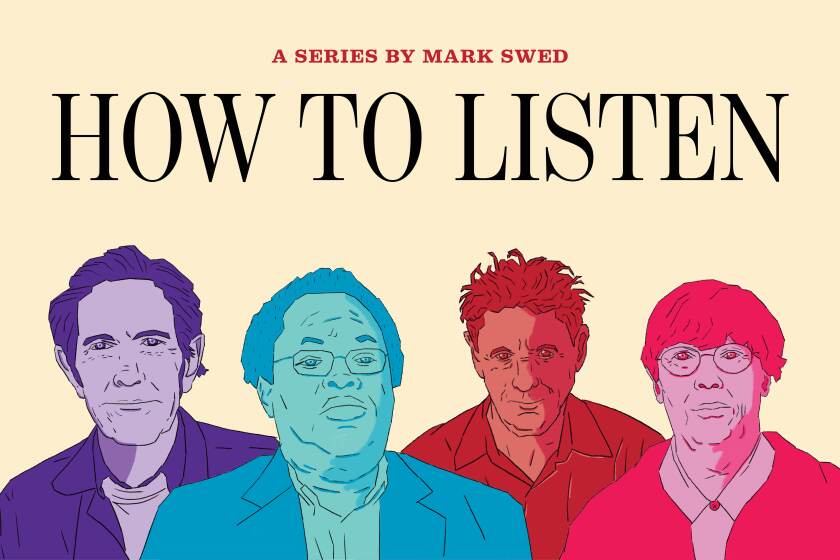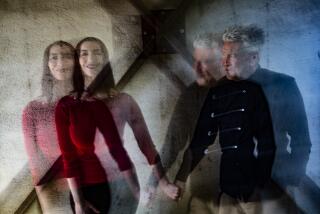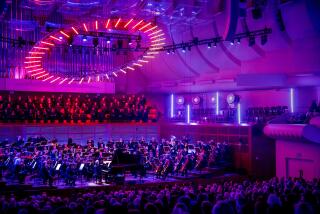Why Scriabin’s satanic Ninth Sonata, ‘Black Mass,’ is a scary wonder of music

We’ve been warned. This is no year to trick or treat, given that said treat could well be followed by a deadly trick. A normal Halloween becomes an invitation to a dance with death. However common a classical music trope the totentanz, this one is signed by a coronavirus. But how about a Black Mass? Let’s go there instead.
In 1911 Alexander Scriabin, Russia’s most progressive and peculiar composer, wrote the sixth of his 10 piano sonatas. With this score, he scared himself half to death, embracing evil as he saw it and sought it. He called its harmonies “nightmarish,” “fuliginous” (or whatever the Russian equivalent is for noxious, sooty gas), “unclean” and other nasty things. He composed as Satan’s servant, but he never played the sonata in public.
Rather, the horrified composer immediately penned his Seventh Sonata, a luminous, erogenous keyboard antidote that he called “The White Mass.” It became his favorite work and he couldn’t stop playing it. But the devil was still in him.
Two years later he composed the Ninth Sonata, which became known, to Scriabin’s pleasure, as “The Black Mass.” A finger breaker, it lasts only eight to 10 minutes, depending on how fast you dare (or can) play it, but whatever the tempo, it feels much longer, long enough for a spooky rite. The sonata ends, in the words of the wonderful Scriabin biographer Faubion Bowers, “with a nightmare march of Gothic visions, ghosts and distorted horrors.” For Bowers this was the most raucous page in all of Scriabin, which is saying a lot.
Can music possess evil, and can its evil then possess us? If so, clearly it must do the same for good. For Scriabin, you couldn’t then know good without the indelible experience of its opposite. He had expectations beyond measure for that luminous light of his Seventh Sonata. A follower of Madame Blavatsky and her occultist Theosophy, Scriabin was, along with penning the devil’s will in his Ninth Sonata, proposing a “Mysterium” Symphony, a musical rapture like none before that involved all five senses. It was to be given in India in the shadow the Himalayas with the audience called to its exalted places by bells suspended from the billowy white clouds in a cerulean sky.
Some years ago, I requested an interview with the Dalai Lama about music. He rarely spoke of music, but music and musicians seemed to follow him everywhere he went. To his assistant’s astonishment, he agreed, if only to disavow me of succumbing to music’s spell. Seeing me as a particularly susceptible case, he explained, with a hint of impatience, that we can become too readily attached to music. As a Buddhist, the Dalai Lama proclaimed, with his famously infectious laugh, even he had to be careful not to become too attached to his Buddhism. When you are attached to one thing, you are not open to another and become incapable of understanding, let alone enlightenment.
That is the magic of Scriabin’s “Black Mass,” a sonata darker, more mysterious and more sinister than even the Sixth, yet one that the composer did play and that a great many other great pianists, Vladimir Horowitz and Sviatoslav Richter among them, played plenty. It gets to the root of grotesqueries. It thrills in chaos and destruction. Its lyrical passages have a sickly sweetness that cling. It takes you to the other side. And because of that, you know there are other sides. For Scriabin, the satanic was the dominating principle of the universe; the devil was behind all movement — the motion of particles, subatomic to celestial bodies. In being the deadliest dance of death, Scriabin’s Ninth Sonata comes to stand for life.
Just how Scriabin could produce that on the keyboard is one of music’s wonders. To unravel the so-called laws of nature he had to unravel the so-called laws of harmony. This was a historical time for music, which was undergoing unprecedented change. Schoenberg expunged tonality, with its too predictable pull on the emotions, creating a sensation with his own surreal grotesquery, “Pierrot Lunaire.” Stravinsky, whom Scriabin felt was little more than excellently warmed-over Rimsky-Korsakov, turned to rhythm in his “The Rite of Spring” as the device for unleashing our underlying primitivistic impulses.
Scriabin’s contribution was to create sensation though mood. For him, tones represented colors. They suggested smells. They produced meaning. But they followed their own rules. His Ninth Sonata is in some way the most radical of its time. Tonality was not expunged but transcended. Rhythms were semaphores, messages from the beyond. Melodic themes were the tentacles of a spiritual force that overtook the listener’s will. The pianist was a priest of the mysteries.
Coronavirus may have silenced our symphony halls, taking away the essential communal experience of the concert as we know it, but The Times invites you to join us on a different kind of shared journey: a new series on listening.
The sonata begins very simply: four calm, quietly descending quarter notes in the right hand that return to the first. They are quirkily harmonized, becoming instantly otherworldly. No piano sonata takes you into its realm quite so readily. The left hand at first mirrors the right but quickly inserts a rising idea. A repeated staccato tattoo emerges, which Scriabin notes in the score as a mystérieusement murmuré.
These themes work like a drug injected into the bloodstream. There is a swirl of uncontrollable trills and then a melody, making a great effort to rise, to be played with, Scriabin writes, “an incipient yearning.” The celebration has begun, with everything fusing into dreamlike fantasy of a world tumbling down, the mad march, the climax out of control. Here all the excesses of Scriabin’s most famous orchestral work, “The Poem of Ecstasy,” meet their agony. The unholy havoc instantly fades away, like awaking from a dream. The mysterious opening becomes the ending. Yet the spell remains unbroken.
The trills of Schubert’s B-Flat Sonata — so likable, so haunting, so moving — in Scriabin have become diabolical. Scriabin was compelled to create, as he had with his Sixth Sonata, a spiritual antithesis. In Scriabin’s last 10th sonata, a reverie of trills evokes “insects born from the sun.” Trills have now become “the sun’s kisses.”
Scriabin did not live to reveal much more. In 1915, as he sketched and planned for his “Mysterium,” a small pimple on his lip became infected. Within days, the 44-year-old composer who had made music an infectious medium, died.
But infection didn’t end there. In the years following his death, Scriabin became an underground influence in the avant-garde. In Los Angeles of the 1920s and 1930s, where the Theosophical Society had taken hold, young West Coast composers creating their own traditions became fascinated by Scriabin’s harmonies, as did progressive composers in Chicago and New York. John Cage and Elliott Carter both talked about the early influence of Scriabin.
Scriabin died, moreover, just as silent films were coming into their artistic own in Russia as well as Hollywood and realizing the powerful need of musical accompaniment. It was Scriabin, the master of atmosphere, who became an unsung inspiration for the earliest film music and certainly the composer who most creepily lurks, to this day, behind horror movies.
Starting points
The Russian pianist Vladimir Sofronitsky became known as the greatest proponent of Scriabin in the first half of the 20th century. Yet it was Sviatoslav Richter, who called Sofronitsky “God,” who most fearlessly enters into the Ninth Sonata’s weird resolve. Ninth Sonata recordings from both can be found on YouTube.
Vladimir Horowitz played the Ninth Sonata with electrical speed in a 1953 Carnegie Hall recital and then played with measured rectitude at Carnegie Hall in 1965, both on YouTube.
Today’s great Russian Scriabinite is Anatol Ugorski, whose recording of the sonata made 20 years ago comes closest to a modern reenactment of a satanic rite.
There’s the late English pianist John Ogden. Scriabin was drawn to London, where the Theosophist Annie Besant was headquartered, and Ogden was well equipped to capture that occult.
The great Canadian virtuoso Marc-André Hamelin is more that rationalist, but by unraveling all the notes with such sheer intensity, he gets inside the sonata in ways no one else before him has. His set of the complete Scriabin sonatas is the one I return to most often.
With live concerts largely on hold, critic Mark Swed is suggesting a different recorded music by a different composer every Wednesday. You can find the series archive at latimes.com/howtolisten, and you can support Mark’s work with a digital subscription.
More to Read
The biggest entertainment stories
Get our big stories about Hollywood, film, television, music, arts, culture and more right in your inbox as soon as they publish.
You may occasionally receive promotional content from the Los Angeles Times.












